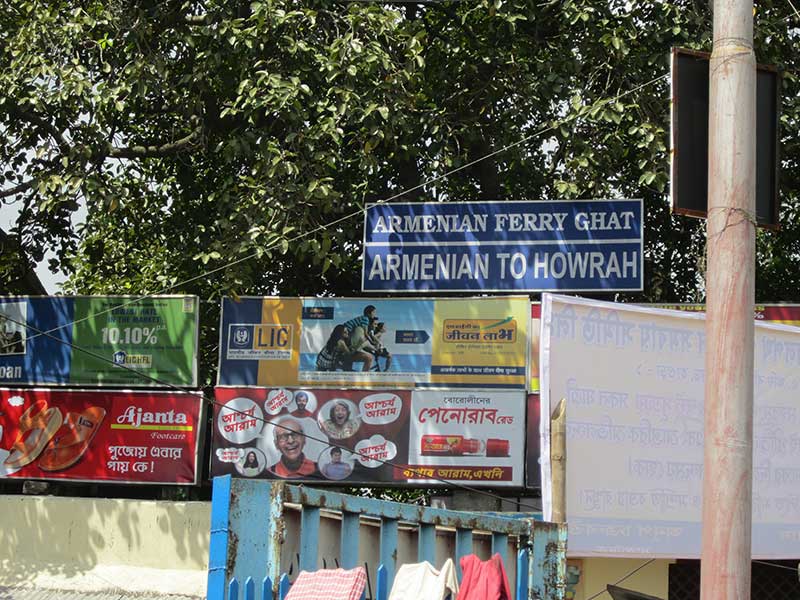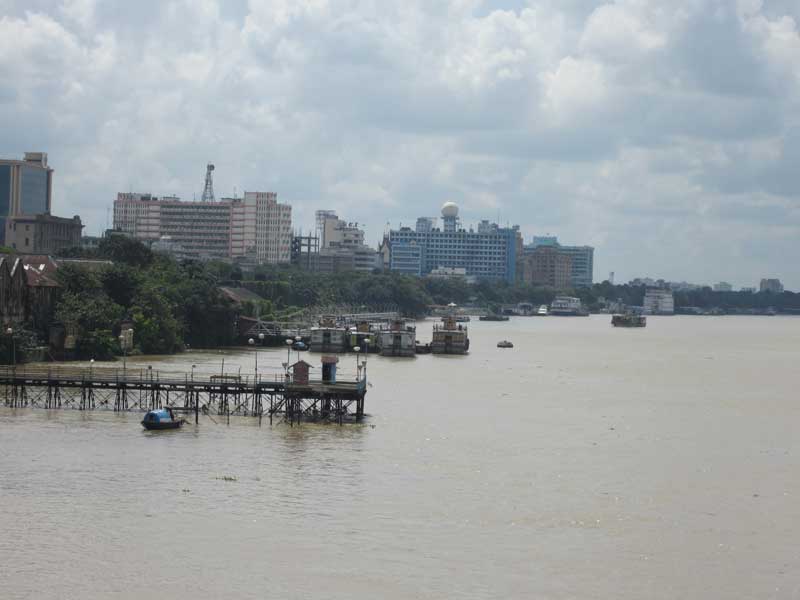
The Armenians embraced Christianity in 301 AD and in the 17th century, they were invited by Emperor Akbar to settle in his dominions. They arrived in Bengal around 1645 and settled along the Hooghly’s fertile western bank, like most traders of the time. It is therefore obvious that, they migrated from Armenia in West Asia and came to India long before the British and proceeded to establish their iconic businesses and institutions that live even to this day.
In the early 19th century, the Armenians were a prominent community in Calcutta that ran coal mines, indigo, jewelry and shellac business and built some of the city’s famous landmarks like, Stephen Court on Park Street.

A panoramic photograph of river ghats, by Bourne and Shepherd, c.1880.
During the British rule in India, the Armenians contributed a great deal towards the development of infrastructures for the development of trade and commerce of Calcutta. Manvel Hazaar Maliyan, one among the prominent Armenians, based in Calcutta, was popularly known in the city as Huzoorimal. He was a reputed trader, engaged in the business of multifarious items, mainly spice and precious stones.
With the intention to make safe storing arrangements to facilitate shipments, he built the ornamented Armreian Ghat along the Hoogly River in 1734, for the benefit of the merchants of the town. The Ghat was also built to facilitate the docking of their ships. The gracefully designed cast iron structure of the Armenian Ghat soon earned the appreciation of the locals and they fondly started to call it as Armani Ghat. Business apart, like other Ghats in Calcutta, people used to visit the Armani Ghat to take a dip in the holy water.


With the improvement of the transport system of the city, Armenian Ghat was linked to a public transport service. From 15 August 1854, the East India Railway Company started a regular service, twice in a day, between Howrah and Hoogly and Armenian Ghat became their booking office. The intending passengers used to buy their tickets from that booking counter in the Ghat, crossed the river by launch or steamer, sponsored by the railways and board from the allotted platform at Howrah. Armenian Ghat became more bustling, when the Cachar Sunderbund dispatch steamer also started to function from there.

Meanwhile, in February 1873, the Tramway Company introduced a trial service to run a horse-drawn tram route of 2.4 miles (3.9 km) between Sealdah and Armenian Ghat Street, for the benefit of the ferry passengers. But, as the ferry service of the Railway Company was discontinued after the construction of the Howrah Pantoon Bridge, the trial service of the Tramways Company never became a regular one.
Gradually, as the transport system by the road and the railways improved, Calcutta lost its importance as a port and the Armenian Ghat also lost its past glory. Today, though the ancient structure of the Armani Ghat reminds one of its heritages, the old structure is used only as one of the storehouses of the Calcutta Port Trust. Ridiculously, like its glorious past, even today it becomes buzzing, especially during the morning hours, with the bustles of the traditional wrestlers, bodybuilders, along with the regular bathers and the worshippers.

